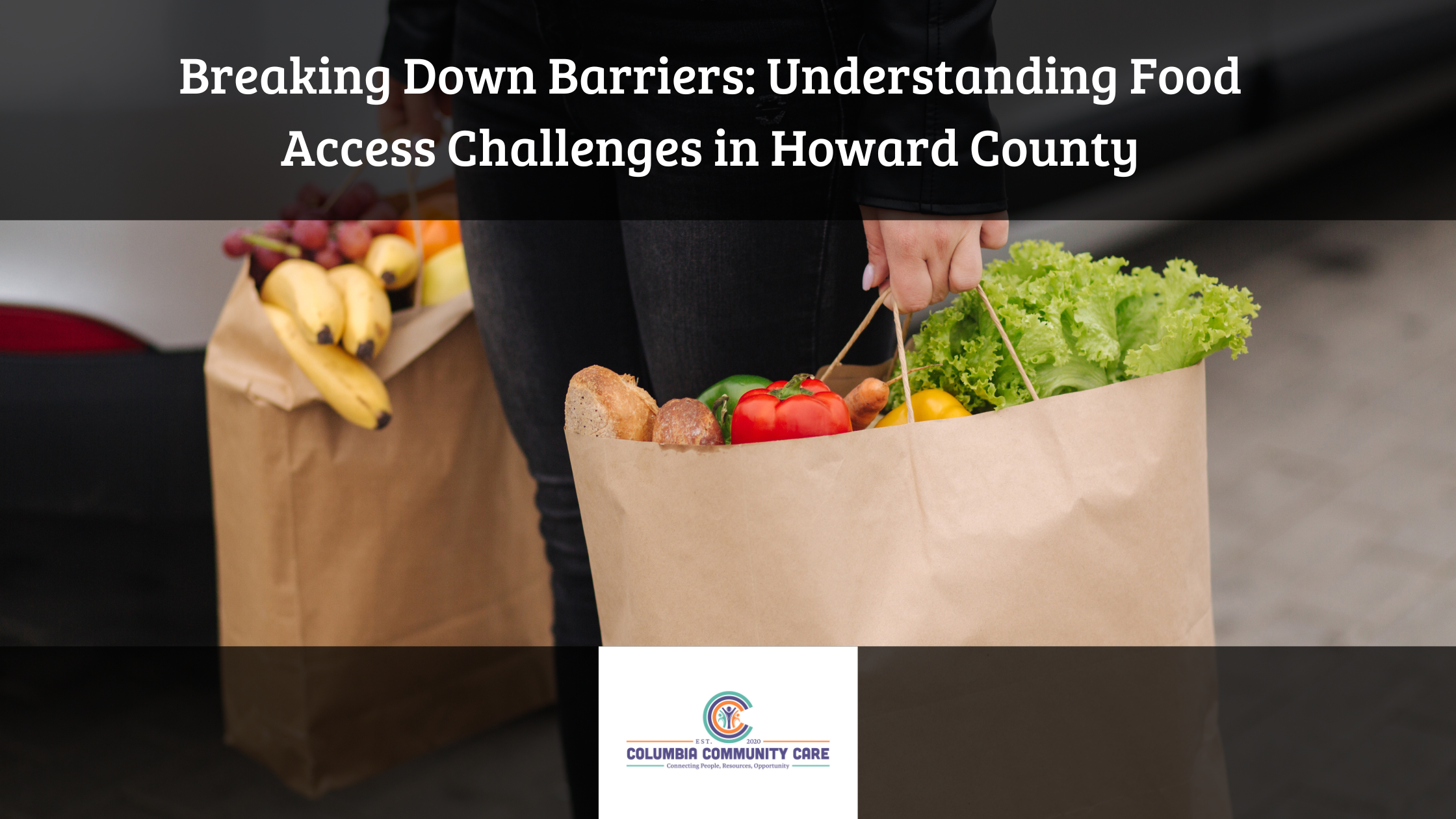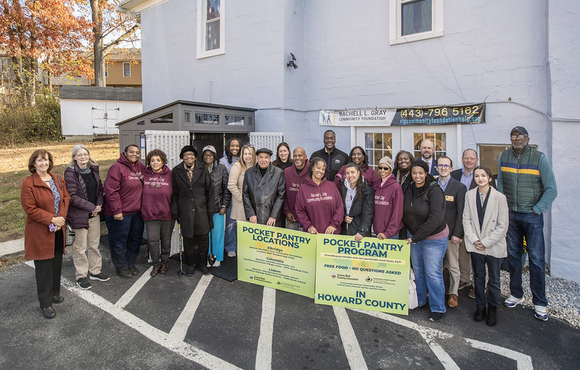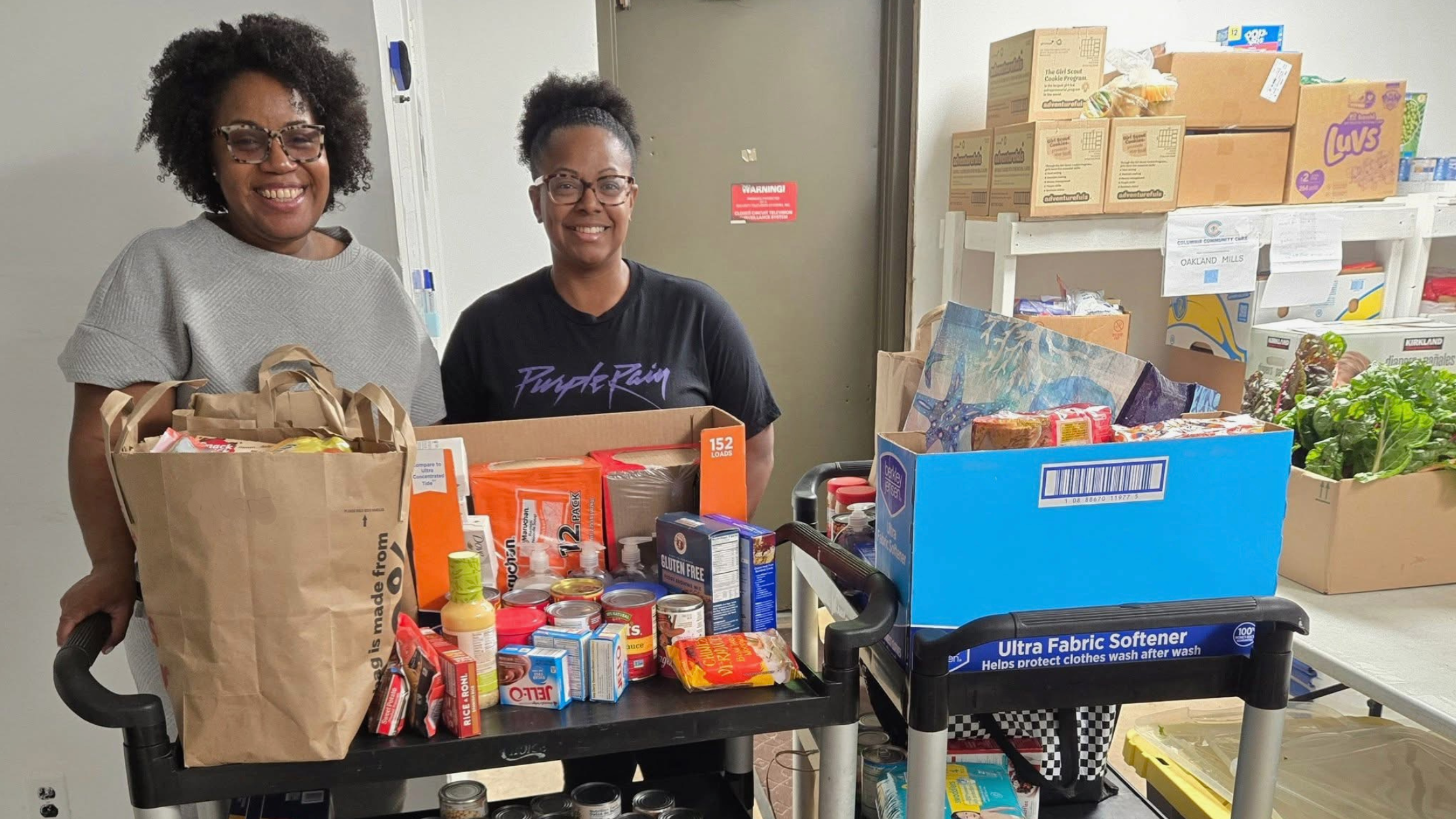“Food insecurity isn’t just about hunger – it’s about deeply rooted systemic barriers that prevent people from accessing the nutrition they need,” explains Erika Chavarria, executive director of Columbia Community Care (CCC). “Even in an affluent area like Howard County, we see how these barriers impact our neighbors every day.”
While Howard County appears prosperous on the surface, food access challenges persist, particularly affecting low-income communities and communities of color. These challenges aren’t random – they stem from long-standing inequities in how our communities are structured and resourced.
Consider the simple act of grocery shopping. In wealthier neighborhoods, residents might have several supermarkets within easy reach. But in other areas, families face what experts call “food deserts” – areas where fresh, healthy food options are scarce. When the nearest grocery store is miles away, a quick trip for fresh produce becomes a major undertaking, especially for those relying on public transportation or juggling multiple jobs.
Even when grocery stores are nearby, cost remains a significant barrier. Fresh fruits, vegetables, and lean proteins often carry higher price tags than processed foods. For families stretching their budgets, these price differences can make healthy eating feel out of reach. While assistance programs like SNAP provide crucial support, they don’t always cover the full cost of nutritious meals, and some families earn just enough to be ineligible while still struggling to make ends meet.
Historical housing policies have played a significant role in creating these disparities. Practices like redlining concentrated communities of color in under-resourced areas, leading to fewer economic opportunities and limited access to quality food retailers. These past decisions continue to impact food access today, with Black and Hispanic households experiencing food insecurity at higher rates than white households.
“We see how these systemic barriers compound each other,” Chavarria notes. “When someone faces both transportation challenges and higher food prices, while possibly working multiple jobs with limited time, accessing healthy food becomes increasingly difficult. These aren’t individual failures – they’re systemic challenges that require systemic solutions.”
Columbia Community Care works to address these barriers through multiple approaches. “We understand that food assistance needs to meet people where they are,” says Chavarria. “That means considering location, transportation access, and operating hours that work for working families.”
Creating lasting change requires understanding that food insecurity isn’t just about individual circumstances – it’s about addressing the systemic inequities that create barriers to food access.



